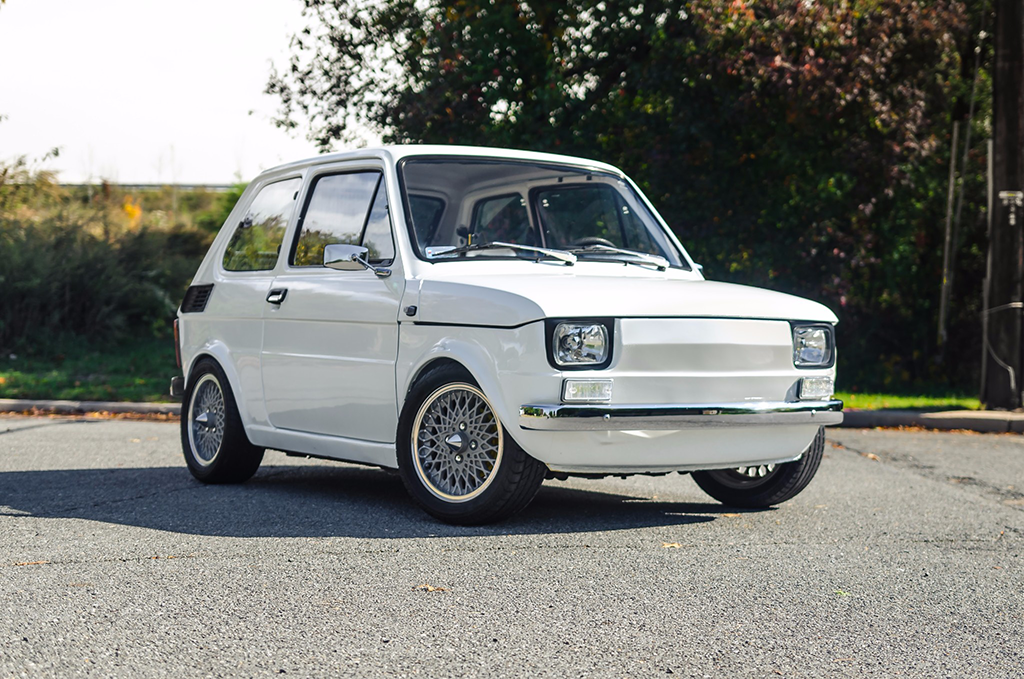-
Insurance
InsuranceAbout our productsLearn about insuringGet a quote Get current values, historical values, model history and more.
-
Valuation
ValuationHagerty valuation toolLook up a vehicle value Get current values, historical values, model history and more.
-
Events
EventsHagerty official eventsHagerty ClubhouseEvent calendar
-
Entertainment
EntertainmentMore to explore
- Portal login
1980 Fiat 126
650 2dr Saloon 0.7 L
Vehicle values by condition
Fair
Condition 4
£1,700
#4 cars are daily drivers, with flaws visible to the naked eye. The chrome might have pitting or scratches, the windshield might be chipped.
Good
Condition 3
£2,900
#3 cars could possess some, but not all of the issues of a #4 car, but they will be balanced by other factors such as a fresh paint job or a new, correct interior.
Excellent
Condition 2
£5,300
#2 cars could win a local or regional show. They can be former #1 cars that have been driven or have aged. Seasoned observers will have to look closely for flaws.
Concours
Condition 1
£7,600
#1 vehicles are the best in the world. The visual image is of the best car, unmodified, in the right colours, driving onto the lawn at the finest concours.
Insurance premium for a
1980 Fiat 126 650 2dr Saloon 652
valued at £2,900
£118.20
/ year*
History of the 1977 - 1987 Fiat 126

1977 - 1987 Fiat 126
Fiat 126 1972 to 1992
The Fiat 126 is a 2+2 seater, rear-engine, rear wheel drive two or three door saloon that was introduced in October 1972 as a replacement for the iconic Fiat 500. It was the last mass-selling car of its type to wear the Fiat badge.
The Fiat 126 was first unveiled at the 1972 Turin Motor Show and although much of its running gear would have been familiar to owners of the 500 it would eventually supersede, the unitary coachwork was all-new. Beneath its cuboid lines, the front suspension was by independent transverse leaf springs and upper wishbones with independent, semi-trailing arms and coil springs at the rear. Braking was via drums fore and aft and the steering by worm & sector. Some observers were surprised to note that despite its diminutive appearance the 126 was almost the same length as the Mini.
British imports commended in July 1973 and a "Sunshine Roof" version followed in 1974. This version was replaced at the end of 1976 by the new "De Ville" flagship and in September of the following year the 126 gained a larger engine. Italian production ended in 1979 but manufacture continued in Poland; Fabryka Samochodów Malolitrazowych (FSM) had been making the 126 since 1973 where it was popularly known as 'Maluch' or 'Little One'.
In 1983 the De Ville was dropped from the line-up and in December 1987 the 126 BS boasted a water-cooled engine and a hatchback rear door. Official UK sales ended in the spring of 1992 but the Fiat was made in Poland until September 2000. The final batch of 1,000 126s were painted red or yellow and sold as the special; edition 'Happy End'.
Power for the Fiat 126 was by an air-cooled 594cc S2 OHV or a 652cc S2 OHV engine or a water cooled 704cc S2 OHV unit. The transmission was a four-speed manual with synchromesh on the top three ratios.
A Fiat 126 is self-evidently not designed for motorway travel and nor is it renowned for its interior space but to thousands of enthusiasts it remains the town car par excellence. Some prefer the more comfortable interior (and rack & pinion steering) of the later versions and versions equipped with a sliding roof are much sought after.
Any potential Fiat 126 owner should inspect every aspect of the body for rust but especially around the bonnet, under the spare wheel well, the door bottoms and around the front and rear windscreens, the fuel tank and at the rear suspension arms. Polish built models of the late 1990s have a dire reputation for corrosion. The air-cooled engines are known to suffer from oil leaks and timing chain problems are common while the water-cooled unit does suffer from over-heating. Models fitted with a sunroof should be checked for leaks and RHD headlamps are now a challenge to find.
Alternatives to the Fiat 126 include the Mini 850, the Hillman Imp and the Suzuki SC100 "Whizzkid".
Hagerty Newsletter
Get your weekly dose of car news from Hagerty UK in your inbox

ADVERTISEMENT